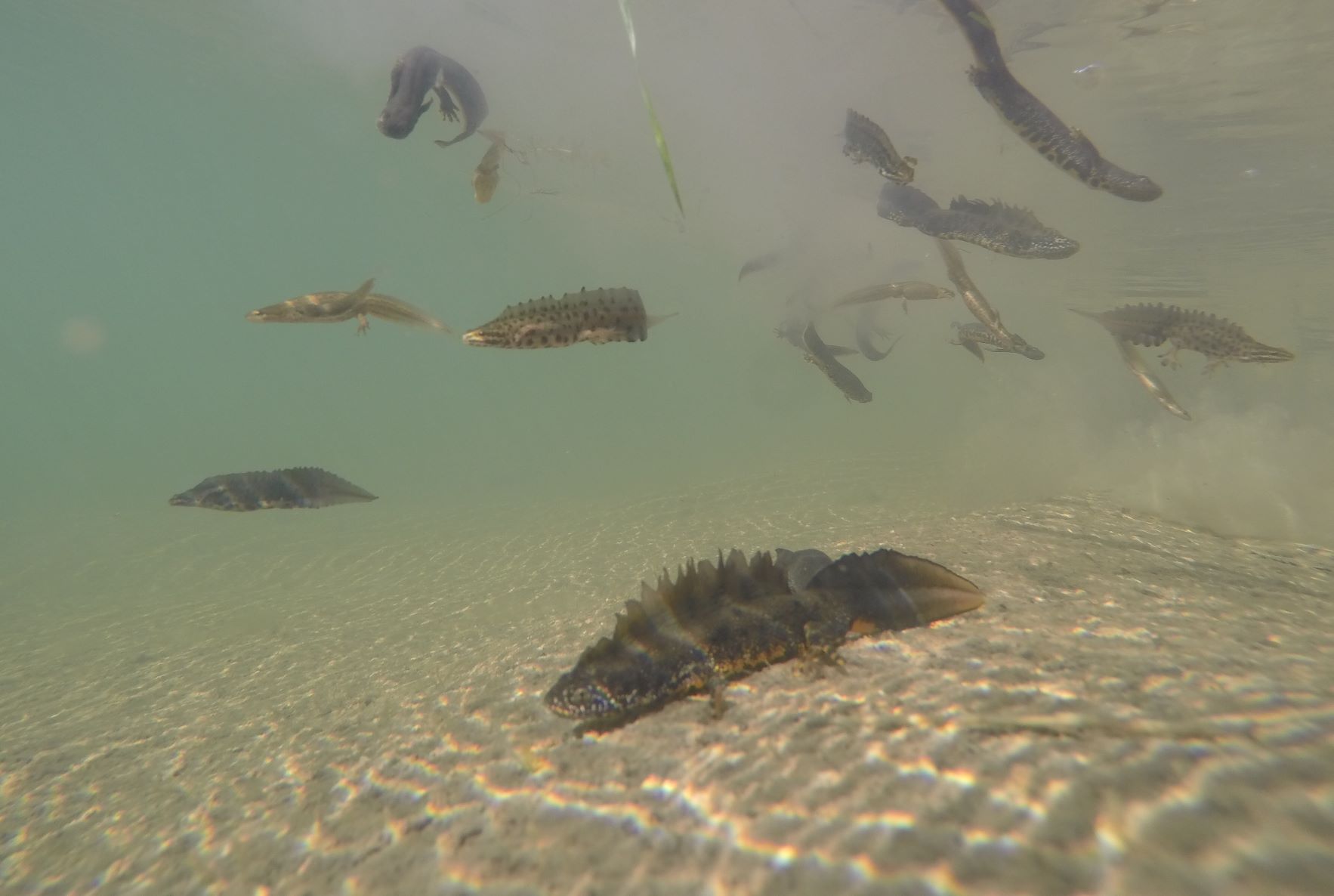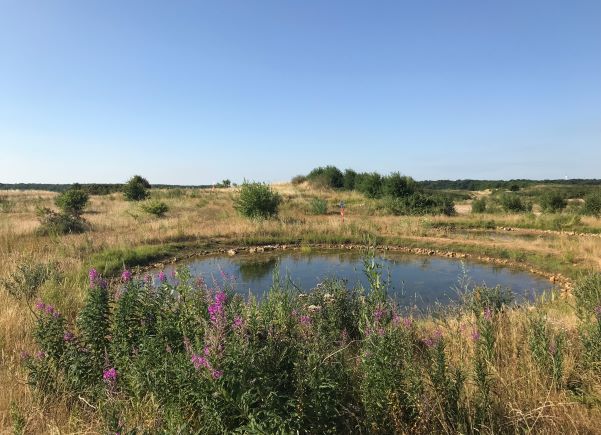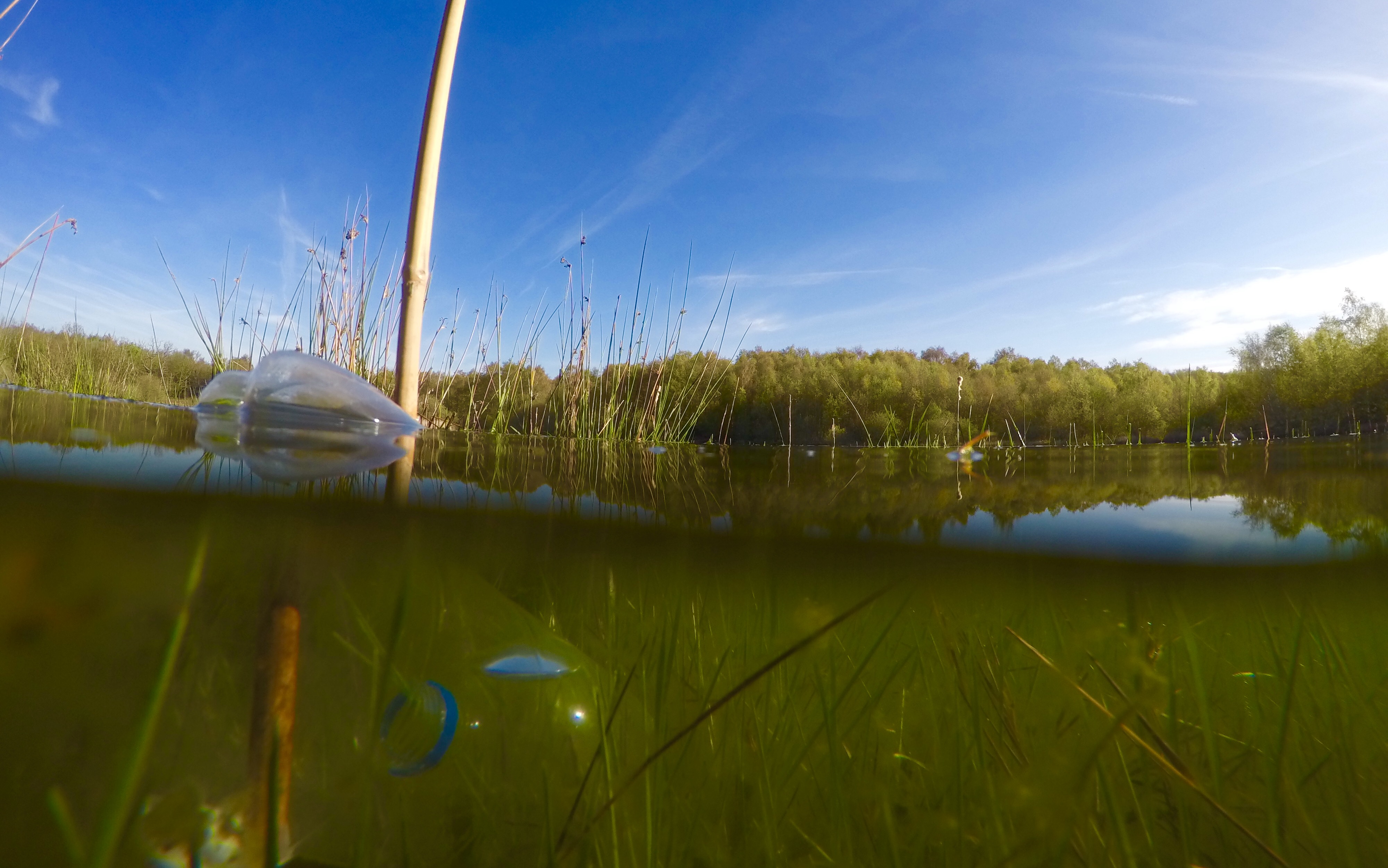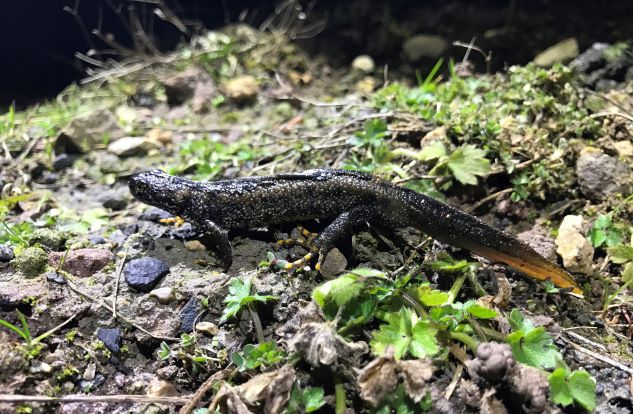Great crested newts (Triturus cristatus) are one of seven amphibian species native to the UK. They are the biggest of our newts and, thanks to comments made in the media, they are probably the most well-known and least liked.
As we are fast approaching another great crested newt survey season what are some of the key facts around great crested newts, and are they the public enemy the government wants to make them out to be?
Identification
Great crested newts are the biggest of our native newt species and can be up to 15cm in length. Their skin is almost black in colour and they have a bright orange belly with black blotches, which are individual to each newt, much like our fingerprints. They are often referred to as the ‘warty newt’ due to the rough, warty, appearance of their skin. The males have a crest along their backs, which is more visible in water, and a white flash on the side of their tail.

Life Cycle
Great crested newts are amphibians and therefore they spend much of their time in terrestrial habitats, returning to aquatic habitats to breed. They are nocturnal and feed on invertebrates, spending their days seeking refuge under areas of suitable refugia, such as rocks and logs, or within animal burrows.
During the spring great crested newts come out of hibernation and return to their ponds to breed. The males perform an extravagant courtship display to woo the females, who lay around 300 eggs during the season, each one carefully folded inside the leaf of an aquatic plant.
Once they have bred the adults move back away from the ponds to feed in the surrounding terrestrial habitats, preparing themselves for hibernation.
Great crested newt eggs take several weeks to hatch into larvae, which are distinguishable from frog and toad tadpoles by their feathery gills. The larvae continue to feed in the pond for several months, gradually growing into the distinctive newt form, an eft. In the late summer the efts leave their ponds and head to the surrounding terrestrial habitat ready for their first winter.
During the winter great crested newts remain in terrestrial habitats using log piles, rocks or animal burrows to protect themselves from frosts before starting the whole process again in the spring.
Habitat
Great crested newts show a preference for habitats that provide a range of aquatic and terrestrial habitats within a single area. Although great crested newts can move over a kilometre between habitats, most remain within around 250m of their breeding ponds.
Preferable breeding ponds are usually a larger pond with areas of open water surrounded by submerged and emergent vegetation. Fish predate newt eggs so an absence of fish is favoured, although not essential.

Although great crested newts show a preference of certain type of habitat, they are also adaptable and can be found in a wide range of environments, including water storage tanks and flooded quarry sites, or other areas that display minimal vegetation.
Distribution
Great crested newts are native to the UK and their distribution is widespread, if patchy, throughout lowland England and Wales. Populations are sparse throughout Scotland and they are absent from Ireland.
Protection
Great crested newts are protected in the UK under The Conservation of Habitats and Species (Amendment)(EU Exit) Regulations 2019 and the Wildlife and Countryside Act 1981, which make it an offence to kill, injure, capture, disturb or sell them or to damage or destroy their habitats.
Threats
Great crested newts have several natural predators although their main threat is from humans due to habitat loss and fragmentation from intensive farming practices and development.
Surveys
Surveys for great crested newts take several forms, depending on the required outcomes. Most surveys concentrate on populations when they are present in ponds, as this yields the most reliable results, with the survey season broadly extending from mid-March to the end of June.
If surveys are only required to establish the presence or absence of the species this can be done by either eDNA surveys or physical surveys. The season for eDNA surveys extends from mid-April to the end of June and requires water samples to be collected from ponds and sent for testing. Physical surveys require several survey techniques, including bottle trapping, torch searching, egg searching and netting, to be carried out on four occasions between mid-March and mid-June, with at least two of those surveys required during the peak period of mid-April to mid-May.

Once presence of the species has been confirmed further physical surveys can be carried out to accurately assess the size of the population.
Although the survey season is short the requirement for great crested newt surveys does not necessarily mean major delays, like all ecological surveys, planning ahead for the season is essential and successful planning should mean that delays can be avoided.
Licencing and Mitigation
Like all protected species works affecting great crested newts must be covered by a licence from the appropriate authority, be it Natural England, NatureScot or Natural Resources Wales.
Although great crested newts have recently become something of a villain to the government’s plans to ‘Build Build Build’ the presence of great crested newts on a site doesn’t have to mean delays, with several licencing schemes in place to streamline the process, including Natural England’s low impact licence and the more recent introduction of District Level Licencing (DLL) throughout most of England. The licencing schemes aim to reduce the time required to mitigate for great crested newts, hopefully preventing further comments like Boris Johnson’s ‘Newt-counting delays are a massive drag on the prosperity of this country’ statement.

The great crested newt is not a villain to the planning system and a drag on prosperity, it is a native species that is in decline. Yes, the survey season is short, but it happens at the same time each year, so surveys can be planned ahead, and yes, if great crested newts are present on site mitigation may be required. This doesn’t require ‘newt counting’, it typically requires a translocation of individuals out of the development site.
The media is quick to point the finger at great crested newts and to blame them for delays in development, however, with the UK being one of the most nature depleted countries in the world you would think that a little extra time wouldn’t be much of a cost to conserve one of our native species.
